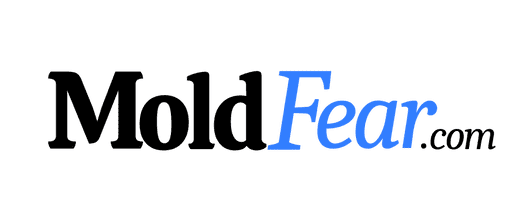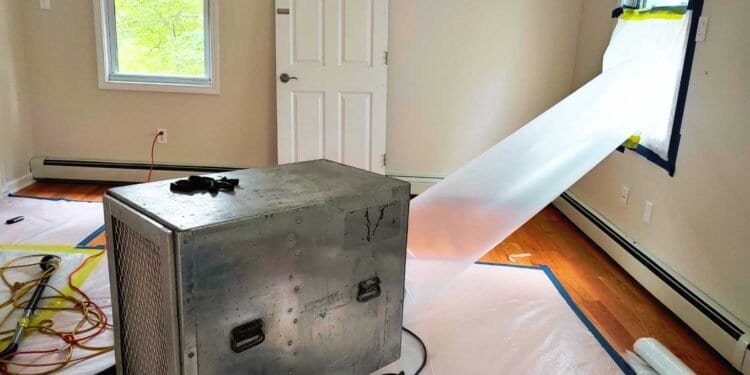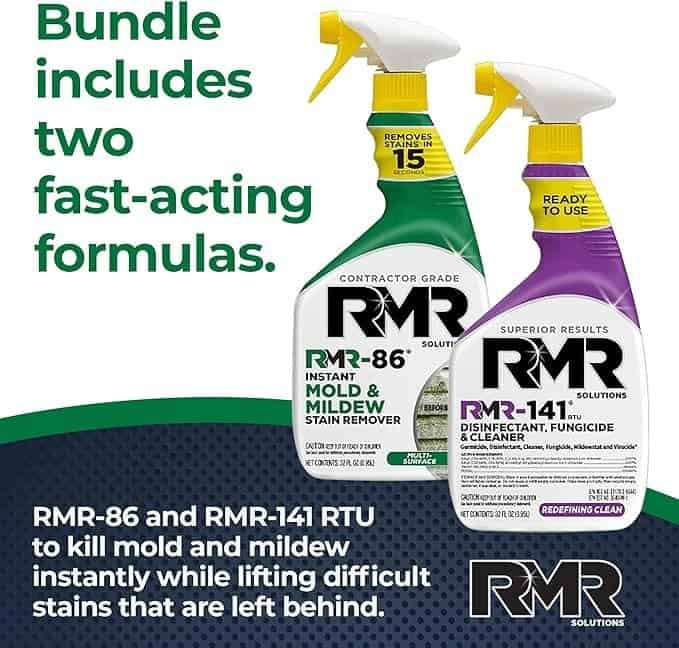In recent years, toxic mold has become a growing concern for homeowners and property managers alike. Mold can cause health problems and property damage if left untreated, making it essential to address the issue promptly. Fortunately, there are many innovative remediation techniques available to eliminate toxic mold and prevent it from recurring.

Fundamentals of toxic mold include understanding the different types of mold and the conditions that promote its growth. Mold thrives in moist environments, making it common in areas with water damage or high humidity. Toxic mold can cause a range of health problems, including respiratory issues, headaches, and fatigue. It’s essential to address mold as soon as it’s detected to prevent it from spreading and causing further damage.
Principles of mold remediation involve identifying the source of the mold, containing it, and removing it safely. Innovative chemical approaches, biological remediation strategies, and physical removal techniques are all effective methods for eliminating mold. Environmental controls, such as dehumidifiers and air purifiers, can also be used to prevent mold from returning. By understanding these principles, property managers and homeowners can take proactive steps to address mold and prevent it from recurring.
Key Takeaways
- Understanding the fundamentals of toxic mold is essential for effective remediation.
- Innovative chemical approaches, biological remediation strategies, and physical removal techniques are effective methods for eliminating mold.
- Environmental controls, such as dehumidifiers and air purifiers, can be used to prevent mold from returning.
Fundamentals of Toxic Mold

Characteristics of Toxic Mold
Toxic mold is a type of mold that produces mycotoxins, which are harmful substances that can cause adverse health effects in humans and animals. It is usually found in damp and humid environments, such as bathrooms, kitchens, and basements. Toxic mold can grow on a variety of surfaces, including wood, drywall, and carpet.
One of the most common types of toxic mold is Stachybotrys chartarum, also known as black mold. It is often found in water-damaged buildings and can produce severe health problems, including respiratory issues, headaches, and fatigue.
Health Implications
Exposure to toxic mold can lead to a range of health problems, depending on the type of mold, the level of exposure, and the individual’s sensitivity. Some of the symptoms associated with toxic mold exposure include:
- Respiratory problems, such as coughing, wheezing, and shortness of breath
- Headaches and migraines
- Fatigue and weakness
- Skin irritation and rashes
- Nausea and vomiting
- Irritation of the eyes, nose, and throat
Individuals with weakened immune systems, such as the elderly, young children, and people with chronic illnesses, are particularly vulnerable to the health effects of toxic mold.
It is important to note that not all molds are toxic, and not all people will experience adverse health effects from mold exposure. However, if you suspect that you have toxic mold in your home or workplace, it is important to take steps to remove it and prevent further growth.
Principles of Mold Remediation

Remediation vs. Removal
Mold remediation is the process of removing mold and preventing its growth in the future, while mold removal is simply the act of removing mold from a surface. It is important to note that complete mold removal is often impossible, as mold spores are present in the air and can easily spread. Therefore, the goal of mold remediation is to reduce mold to safe levels and prevent future growth.
Safety Protocols
Mold remediation can be dangerous if proper safety protocols are not followed. The following safety protocols should be followed during mold remediation:
- Use personal protective equipment (PPE) such as gloves, goggles, and respirators to prevent exposure to mold spores.
- Isolate the affected area to prevent the spread of mold spores to other areas of the building.
- Use negative air pressure machines to prevent mold spores from spreading to other areas of the building.
- Use HEPA vacuums to remove mold spores from surfaces.
- Dispose of contaminated materials properly to prevent the spread of mold spores.
Following these safety protocols is essential for ensuring the safety of workers and occupants during mold remediation.
Innovative Chemical Approaches
Biocides and Antimicrobials
Biocides and antimicrobials are chemicals that can be used to eliminate toxic mold. They work by destroying the cell walls of the mold, preventing it from growing and spreading. Some commonly used biocides and antimicrobials include chlorine bleach, hydrogen peroxide, and quaternary ammonium compounds.
Chlorine bleach is a powerful biocide that can effectively kill mold. However, it can also be toxic to humans and pets if not used properly. Hydrogen peroxide is a safer alternative to chlorine bleach, as it breaks down into water and oxygen and does not leave behind harmful residues. Quaternary ammonium compounds are another type of antimicrobial that can be used to kill mold. They are effective against a wide range of microorganisms and are often used in hospitals and other healthcare settings.
Non-Toxic Mold Inhibitors
Non-toxic mold inhibitors are a newer approach to mold remediation that use natural compounds to prevent mold growth. These compounds work by altering the pH of the environment, making it less hospitable to mold. Some examples of non-toxic mold inhibitors include vinegar, tea tree oil, and grapefruit seed extract.
Vinegar is a mild acid that can be used to lower the pH of surfaces and prevent mold growth. Tea tree oil is a natural antifungal agent that can be used to kill mold and prevent its regrowth. Grapefruit seed extract is another natural compound that can be used to inhibit mold growth. It contains compounds that are toxic to mold but safe for humans and pets.
Overall, innovative chemical approaches can be effective in eliminating toxic mold. Biocides and antimicrobials can be used to kill mold, while non-toxic mold inhibitors can be used to prevent its regrowth. However, it is important to use these chemicals safely and according to their instructions to avoid any negative health effects.
Biological Remediation Strategies

Enzyme-Based Cleaners
Enzyme-based cleaners are a type of biological remediation strategy that uses enzymes to break down the mold and its spores. These cleaners are effective in removing mold from surfaces and preventing its growth. Enzyme-based cleaners are non-toxic and safe for use in homes and commercial buildings. They are also environmentally friendly and do not leave any harmful residues.
Enzyme-based cleaners work by breaking down the proteins in the mold and its spores, causing them to break apart and become inactive. This process is called enzymatic digestion. The enzymes used in these cleaners are specific to the type of mold being treated, making them highly effective in eliminating mold.
Beneficial Microorganisms
Beneficial microorganisms are another type of biological remediation strategy used to eliminate toxic mold. These microorganisms are natural predators of mold and help to restore the natural balance of microorganisms in the environment. They work by competing with the mold for nutrients and space, preventing its growth.
Beneficial microorganisms are safe for humans and pets and do not harm the environment. They are available in various forms, including sprays, powders, and liquids. These microorganisms can be applied to surfaces or added to the air to eliminate mold spores.
In conclusion, biological remediation strategies such as enzyme-based cleaners and beneficial microorganisms are effective in eliminating toxic mold. They are safe, non-toxic, and environmentally friendly, making them an excellent choice for homes and commercial buildings.
Physical Removal Techniques
Advanced HEPA Filtration
Advanced HEPA filtration is a powerful and innovative method for removing toxic mold from buildings. HEPA stands for High-Efficiency Particulate Air, and these filters are designed to capture particles as small as 0.3 microns. This means that they are highly effective at removing mold spores from the air.
HEPA filters are used in conjunction with negative air pressure machines, which create a vacuum that sucks air out of the contaminated area. This ensures that mold spores are not spread to other parts of the building during the remediation process.
During the remediation process, the contaminated materials are carefully removed and placed in sealed bags for disposal. The air in the contaminated area is then filtered through the HEPA filters, which capture the mold spores and other contaminants.
Innovative Vacuuming Methods
Innovative vacuuming methods are another effective way to remove toxic mold from buildings. These methods use specialized vacuum cleaners that are designed to capture mold spores and other contaminants.
One such method is the use of a HEPA vacuum cleaner. These vacuum cleaners are equipped with HEPA filters, which capture mold spores and other particles as small as 0.3 microns. They are also designed to create negative air pressure, which helps to prevent the spread of mold spores during the remediation process.
Another innovative vacuuming method is the use of a dry ice blasting machine. This machine uses compressed air to blast dry ice pellets at the contaminated surface, which causes the mold to freeze and break apart. The frozen mold is then vacuumed up using a specialized vacuum cleaner.
Overall, physical removal techniques are highly effective at eliminating toxic mold from buildings. By using advanced HEPA filtration and innovative vacuuming methods, remediation professionals can safely and efficiently remove mold spores and other contaminants from the air and surfaces in the contaminated area.
Environmental Controls
Moisture Management
One of the most effective ways to prevent toxic mold growth is through moisture management. Moisture control measures include using dehumidifiers, fixing leaks, and ensuring proper ventilation. By keeping the relative humidity below 60%, mold growth can be significantly reduced. It is also essential to fix any water leaks immediately to prevent moisture buildup.
Regular inspections of the building’s water supply and drainage system can help identify potential problems early on. Additionally, the use of moisture-resistant materials such as mold-resistant drywall and paint can help prevent mold growth.
HVAC Innovations
Innovative HVAC (heating, ventilation, and air conditioning) systems can play a crucial role in eliminating toxic mold. HVAC systems can be equipped with specialized filters that trap mold spores and prevent them from spreading. Additionally, ultraviolet (UV) lights can be installed in HVAC systems to kill mold spores and prevent them from growing.
It is essential to maintain HVAC systems regularly to ensure they are functioning correctly. Regular cleaning and filter replacement can help prevent mold growth and improve indoor air quality.
By implementing effective moisture management and innovative HVAC systems, toxic mold growth can be significantly reduced, creating a safer and healthier indoor environment.
Emerging Technologies
Ultraviolet Light Treatment
One of the emerging technologies for eliminating toxic mold is ultraviolet (UV) light treatment. This technique uses UV-C light to kill mold spores and prevent them from reproducing. The UV-C light is able to penetrate surfaces and destroy the DNA of the mold spores, rendering them harmless.
UV light treatment is effective for eliminating mold in small areas, such as bathrooms or closets. It is also useful for preventing mold growth in HVAC systems and air ducts. However, it is important to note that UV light treatment is not effective for eliminating mold in porous materials, such as drywall or carpet.
Ozone and Negative Ions
Another emerging technology for eliminating toxic mold is the use of ozone and negative ions. Ozone is a gas that is able to penetrate surfaces and kill mold spores. Negative ions are able to neutralize mold spores and prevent them from reproducing.
Ozone and negative ions are effective for eliminating mold in large areas, such as basements or entire homes. However, it is important to note that ozone can be harmful to humans and pets if not used properly. It is also important to properly ventilate the area after ozone treatment to prevent ozone buildup.
Overall, these emerging technologies for eliminating toxic mold are promising and offer new options for homeowners and professionals. However, it is important to use them properly and in conjunction with other remediation techniques for best results.
Preventative Measures and Maintenance
Building Materials
The choice of building materials plays a crucial role in preventing the growth and spread of toxic mold. Porous materials such as wood, drywall, and carpeting are particularly susceptible to mold growth. Therefore, it is recommended to use non-porous materials such as tile, concrete, or metal in areas that are prone to moisture. Additionally, using mold-resistant drywall and paints can help prevent mold growth.
Regular Inspection Protocols
Regular inspections of buildings can help identify potential mold growth before it becomes a major problem. It is recommended to conduct inspections at least twice a year, especially in areas that are prone to moisture such as basements, bathrooms, and kitchens. Inspectors should look for signs of water damage, leaks, and humidity levels exceeding 60%. Additionally, proper ventilation and air circulation should be maintained to prevent the buildup of moisture.
To summarize, preventative measures and regular maintenance are essential in preventing the growth and spread of toxic mold. Proper selection of building materials and regular inspections can help identify potential mold growth before it becomes a major problem.
Frequently Asked Questions
What are the most effective methods for professional mold remediation?
Professional mold remediation involves a combination of methods that depend on the extent of mold growth and the affected surfaces. The most effective methods include containment, removal of contaminated materials, HEPA vacuuming, and disinfection with EPA-approved biocides. Professionals may also use air scrubbers to remove airborne mold spores.
How can toxic mold be removed from indoor environments without recurrence?
Toxic mold can be removed from indoor environments without recurrence by addressing the underlying cause of mold growth, such as moisture intrusion or poor ventilation. Professionals may also use advanced techniques, such as thermal imaging and moisture meters, to detect hidden mold. Once the mold source is identified and eliminated, professionals can perform thorough mold remediation to ensure complete removal of mold spores.
What are the latest advancements in mold remediation technology?
The latest advancements in mold remediation technology include the use of advanced air filtration systems, ultraviolet (UV) light technology, and ozone generators. These technologies can help remove airborne mold spores and eliminate mold odors. Additionally, some professionals use microbial cleaning agents that contain beneficial bacteria to prevent mold regrowth.
Which environmentally friendly techniques are used for mold elimination?
Several environmentally friendly techniques are used for mold elimination, including the use of natural cleaners, such as vinegar and hydrogen peroxide. Professionals may also use plant-based cleaners that are free from harsh chemicals and fragrances. Additionally, some professionals use probiotics to restore the natural balance of microorganisms in indoor environments.
How does one ensure complete removal of mold in hard-to-reach areas?
Complete removal of mold in hard-to-reach areas requires the use of specialized equipment, such as borescopes and fiber optic cameras. Professionals may also use specialized tools, such as long-handled brushes and vacuums, to access and remove mold from hard-to-reach areas. Once the mold is removed, professionals can perform thorough disinfection to ensure complete elimination of mold spores.
What safety measures should be taken during the mold remediation process?
During the mold remediation process, professionals should wear personal protective equipment (PPE), such as respirators, gloves, and protective clothing. They should also use containment measures to prevent the spread of mold spores to other areas of the building. Additionally, professionals should follow industry guidelines and regulations for safe mold remediation practices.














